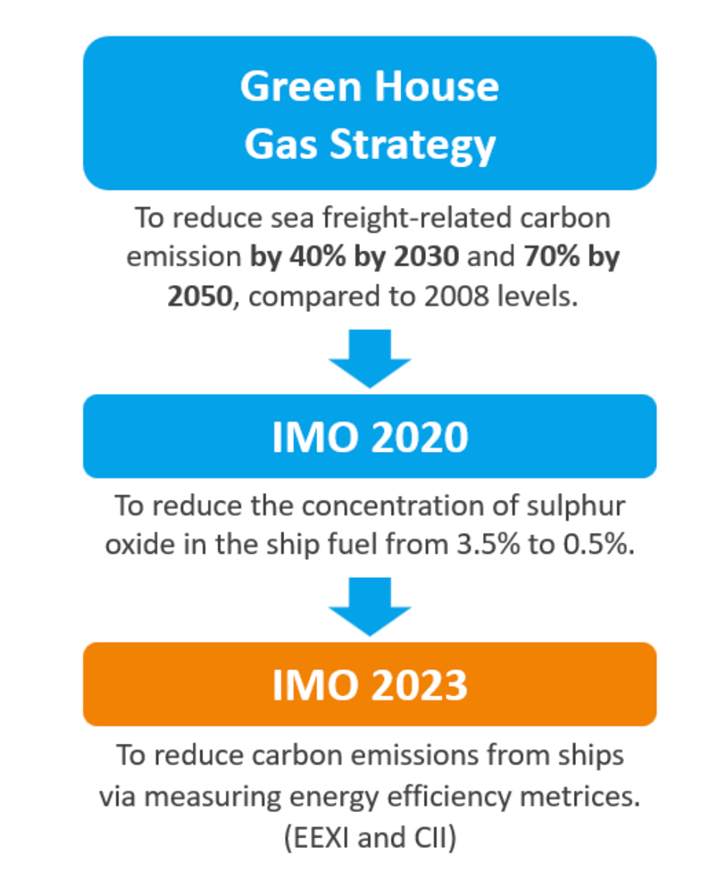With new IMO 2023 regulations, the International Maritime Organization continues its efforts to reduce greenhouse gas emissions caused by global cargo shipping on ocean vessels. Here’s a quick history and rundown of IMO regulations past and new.
What is IMO?
The International Maritime Organization (IMO) is a specialized agency to the United Nations that maintains the safety and security of maritime transportation and prevents pollution caused by international shipping activities. IMO implemented the Green House Gas (GHG) strategy in 2018, which aims to reduce the carbon intensity caused by international shipping. The strategy aims to reduce sea freight-related carbon emission by 40% by 2030 and 70% by 2050, compared to 2008 levels.
IMO also implemented the IMO 2020 in January of 2020, which aims to reduce emission of sulphur oxide from ships in order to protect human health and the environment. The goal of this strategy is to reduce the concentration of sulphur oxide in the ship fuel from 3.5% to 0.5%. This will translate to an annual reduction of 8.5 million metric tons of sulphuric oxide, while at the same time reducing the emission of harmful particles from burning the fuel.
What are the IMO 2023 regulations?
In line with the IMO GHG strategy, the organization continues its mission by implementing IMO 2023, which will take effect on January 1, 2023. The new IMO 2023 regulations aim to reduce carbon emissions from both new and existing ships as measured by two main energy efficiency indicators for:
The Energy Efficiency Existing Ship Index (EEXI) |
Carbon Intensity Indicator (CII) |
|
|
What are the implications of IMO 2023 regulations for stakeholders?
New IMO 2023 regulations mean that shipping companies must reassess their vessels, invest more resources on upgrading their fleet and use new fuel technologies to comply with the regulations. Some impacts that may occur include:

Conclusion
Although the new IMO 2023 regulations may be a challenge in the beginning, IMO 2023 will bring significant positive changes in the international shipping industry in the coming years. The advancement of efficient fuel technology enforced by strict carbon emission regulations will lessen the environmental impact of the global sea freight industry and improve shipping efficiency.




